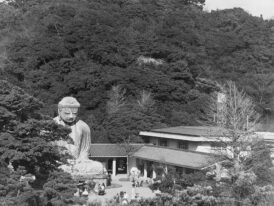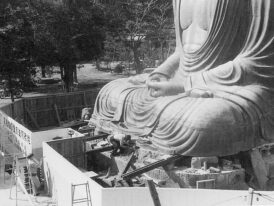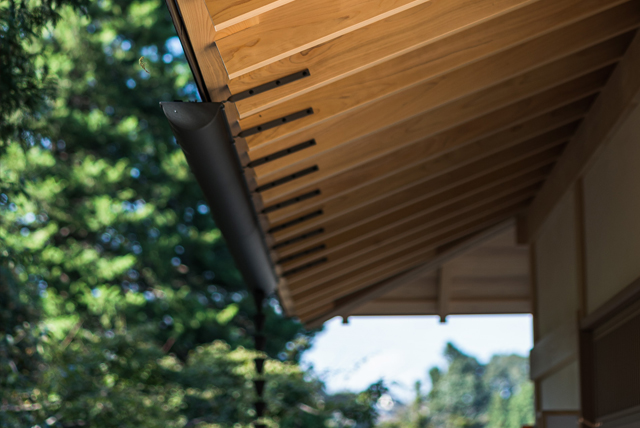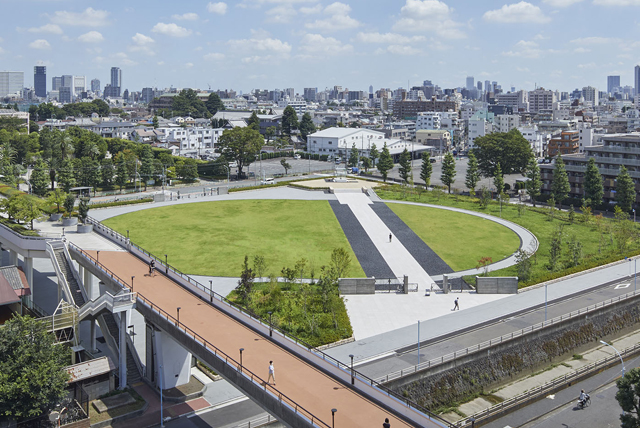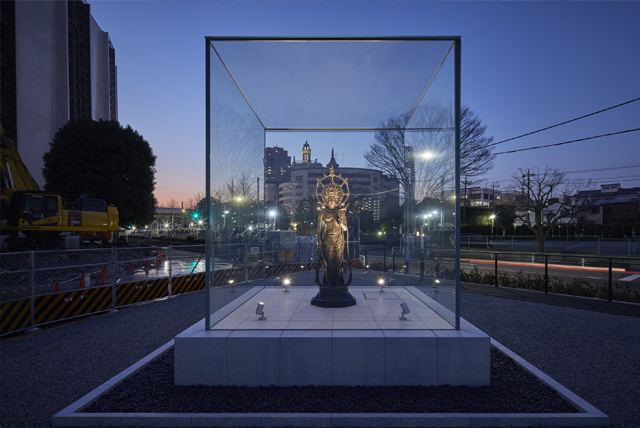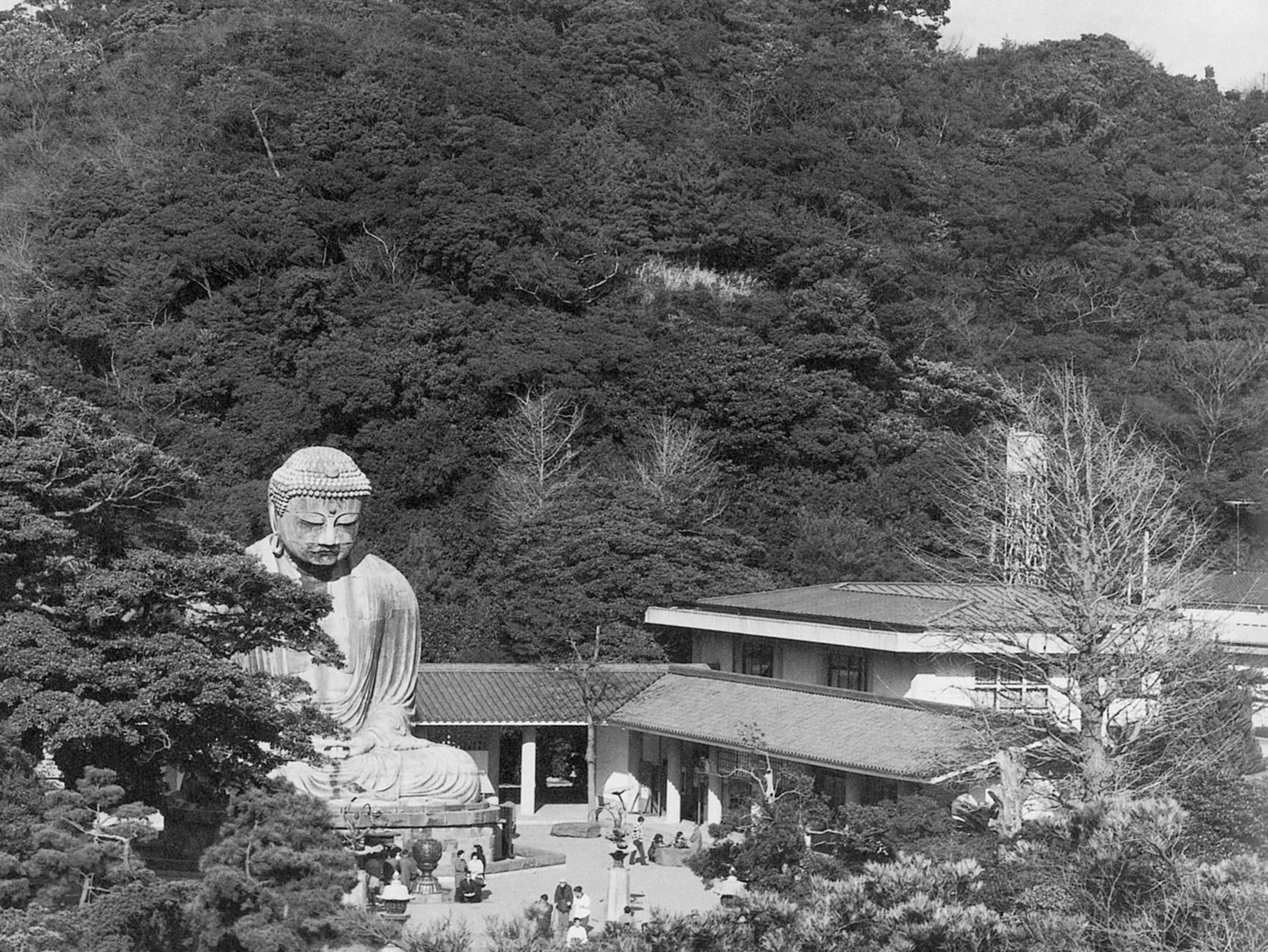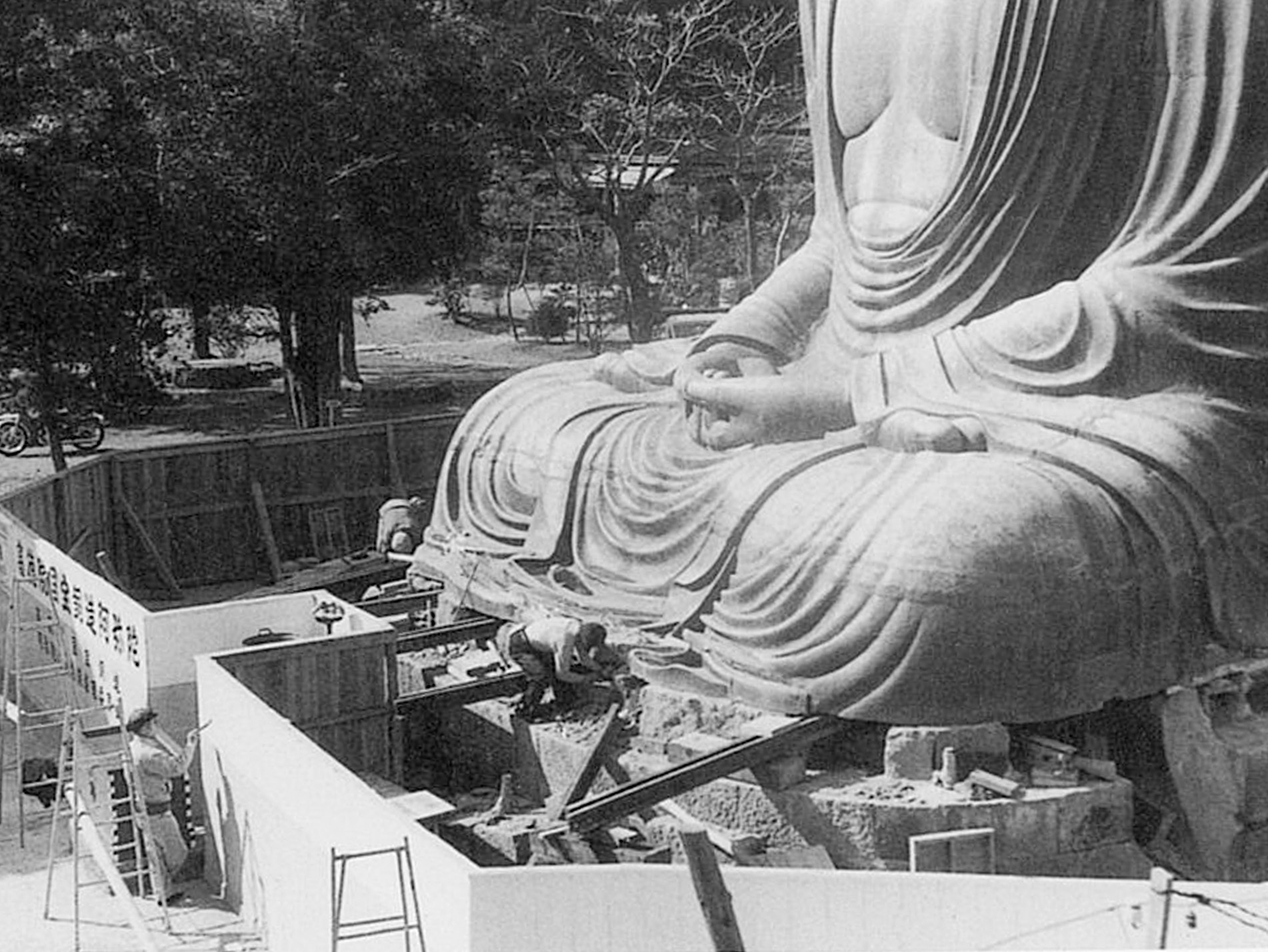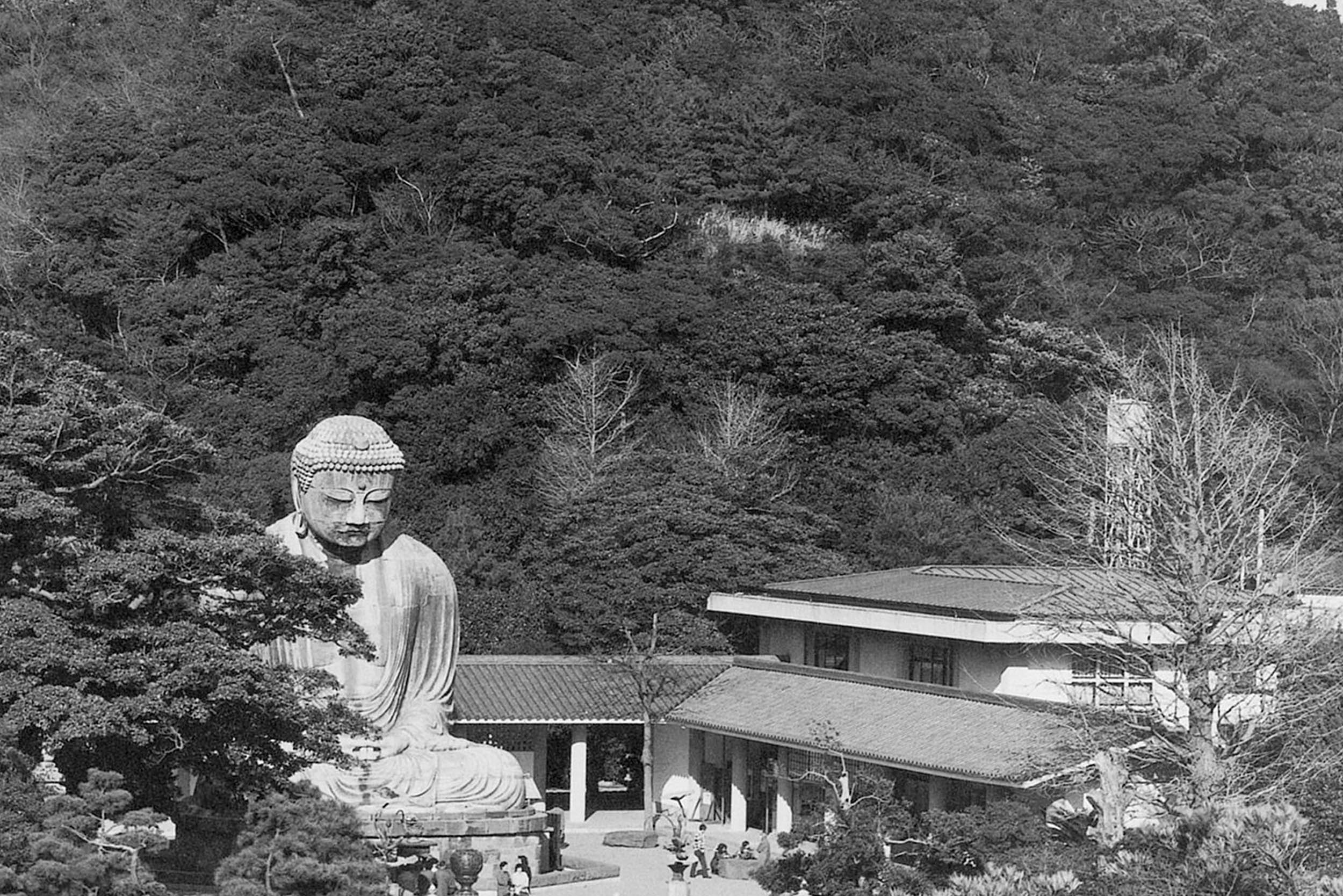
Seismic Retrofit of the Great Buddha in Kamakura Kotoku-in
The Seismic Retrofit of the Great Buddha. The Corridor Surrounding the Great Buddha.
The "Great Buddha Seated in the Open Air" of Kotoku-in Temple in Kamakura, the national treasure Rushana Buddha, measures 11.3 meters in height and 121 tons in weight. It is said to have been cast during the Kamakura period. After more than 750 years since its establishment, it serves as a symbol of the eastward transmission of Buddhism and attracts the faith of people both at home and abroad. In the Great Kanto Earthquake that occurred on September 1, 1923, it is said that the Great Buddha, with its sturdy structure, avoided damage as the Buddha statue itself slided southward. In February 1958 (the 33rd year of the Showa era), the Cultural Properties Protection Committee of the Ministry of Education conducted an investigation for the designation of the Great Buddha as a new national treasure, and it was reported that there was damage to the neck and that its repair and reinforcement were urgent. The repair committee with Dr. Mitsuru Sekino as the chairman proposed, as the repair method for the Great Buddha, in addition to the repair of the neck, a seismic isolation repair project. The one entrusted with the design of the seismic isolation structure was Dr. Shinnosuke Miyake, one of the founders of our company and also a structural engineer. After reinforcing the neck from the inside with a steel frame and epoxy resin, the Buddha statue was made to float, and Japan's first "sliding seismic isolation" with a stainless steel plate laid was realized. In addition, the corridor surrounding the Great Buddha was also designed.
- Completion
- 1960
- Location
- Kamakura, Kanagawa
- Use
- Temple
- Structure
- 免震構造

